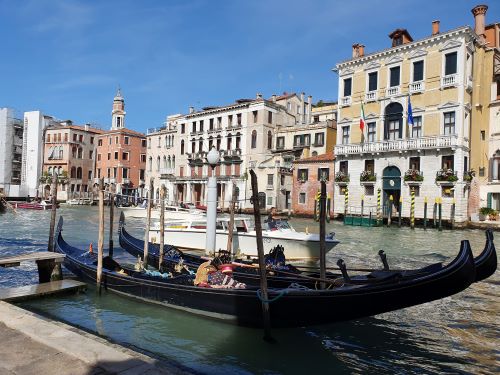Kirkham Travel Guide To Venice
Getting There
Most tourists will either arrive by cruise ship or on a flight into one of the airports, Venice Marco Polo or Venice Treviso.
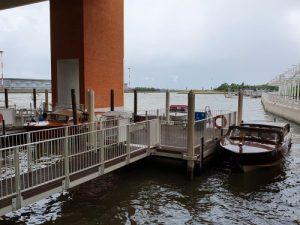
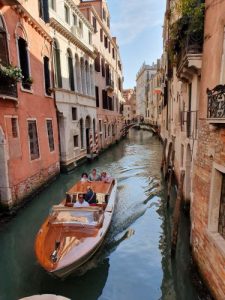
When arriving at the main Venice Marco Polo airport the easiest and quickest way to get into the city is to take a private water taxi. It is not a cheap option but they do hold up to 10 people and it is the iconic way to arrive in Venice if the budget allows.
To begin to explore Venice either on foot or by public transport system it is necessary to get to Palazzo Roma. Many cruise ships will run shuttles to this point and it is possible to take a taxi or a bus from the airports to reach it.
Getting Around
Many of the sites are accessible on foot and concentrated in the San Marco district of the city. To go further afield and visit the islands it can be useful to get a travel card for the Vaporetto service. These are like water buses. The stops are visible on the side of the canal as white boxes with yellow stripes. They have set routes and timetables and it is possible to buy cards for one, two, three or seven days depending upon your length of stay. Like all public transport in Italy it is necessary to validate the card on each journey. As you step on the vaporetto or sometimes in the shelter before you board there will be a machine to scan the ticket. If the ticket is not validated fines are issued, currently set at 59 Euros.
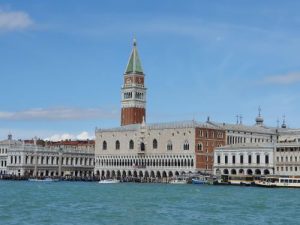
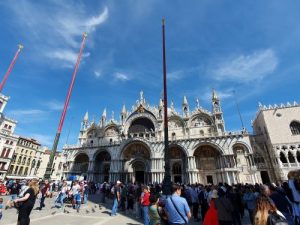
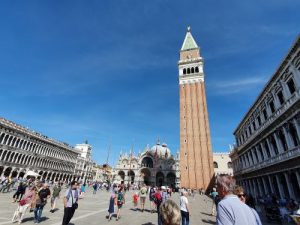
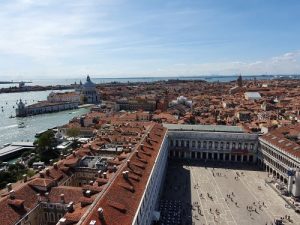
Main Sites
Many of the top sites in Venice are concentrated around the Piazza San Marco or St Marks Square. Here is where you find the Basilica San Marco or St Marks Cathedral and it’s bell tower know as the Campanile. It is free to enter the basilica but there are always queues. To avoid this from April to November it is possible to pay 3 Euros per person for a timed ticket. There is a separate entrance where the timed ticket can be scanned. Some areas of the basilica including the Treasury have additional charges. The Campanile provides great views over St Marks Square and the whole of the city. It is accessible by lift and timed tickets are available online. Next to the Basilica is the Palazzo Ducale, better known as the Doges Palace. Home to the rulers of Venice since 1304 it is well worth a look. Buy a timed ticket online either with or without a guide. Part of the tour incorporates the crossing the iconic Bridge of Sighs. Convicts would get their last glimpse of the city as they passed from the Doge’s interrogation rooms over the bridge into the prison which they were unlikely to ever leave.
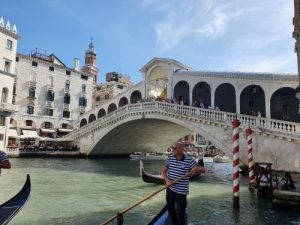
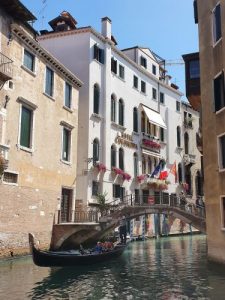
At the other side of the San Marco district is the Rialto Bridge. Maps are available but not always helpful when navigating this part of Venice. Signs on the walls, sometimes official, sometimes in graffiti point towards San Marco or Rialto. Follow these and enjoy the sights you find as your discover the back streets and canals away from the tourist crowds.
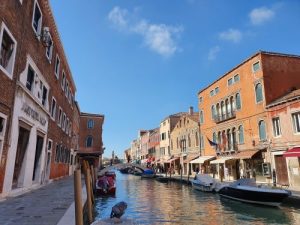
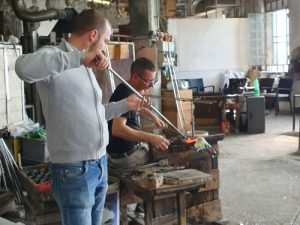
Islands
If time allows it is well worth getting off San Marco to visit some of the other islands in the Venetian Lagoon. Murano is home to glassmaking. In 1291 the Venetian Republic feared that the trade was a fire risk to the largely wooden built city and ordered that furnaces were relocated to Murano. Now it is possible to see these artisans at work as many open up their workshops to allow tourists to see their skills and to purchase souvenirs. A grand canal runs through the middle of the island and is surrounded by shops and restaurants. The hotels here can be a great alternative to the expense and hustle and bustle of a hotel on San Marco.
Burano is famous for lacemaking and brightly coloured buildings. The Lido is home to The Venice Film Festival every summer. A long and thin strip of land it has beaches and a slower hotels for those looking to escape the touristy feel of San Marco.
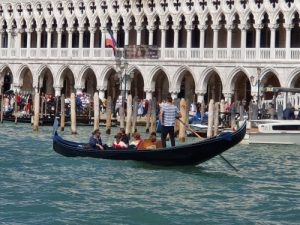
Gondolas
If riding in a gondola is on the list of things to do in Venice there are plenty to choose from. They can always be found at main tourist hot spots such as outside the Palazzo Ducale and at the Rialto Bridge. The Grand Canal is busy with gondolas, vaporettos and water taxis and can make for a bumpy ride. Picking up a gondola at the busiest spots may mean spending some of the trip in a gondola traffic jam so consider a quieter spot for a more relaxing experience. Gondola rides are a regulated activity and have a set price which is currently 80 Euros for 30 minutes during the day, rising to 120 Euros at night.
An authentic alternative to the expensive gondola ride is a Traghetto. These are empty gondolas without the fancy fixtures and fittings. At strategic points along the Grand Canal you can find them ferrying passengers across for just 2 Euros per ride. A convenient way to cross the Grand Canal and see the views from it like a local.
Top Tips
- Plan what to see and how to get to it
- Cut down on the use of travel cards by seeing the sites that need them on the same day
- Prebook timed tickets for any of the main attractions to avoid the queues
- For food and drink avoid the main tourist hotspots – step a few streets from the main sites of St Marks Square or Rialto Bridge and there are many more reasonably priced options available

